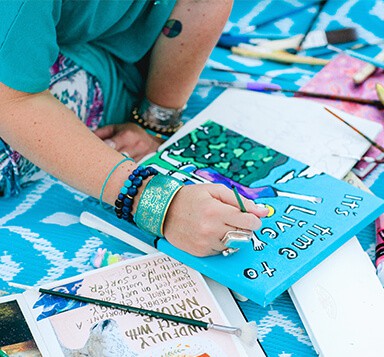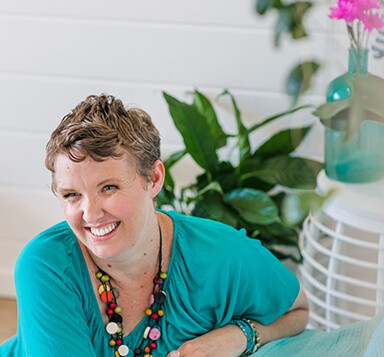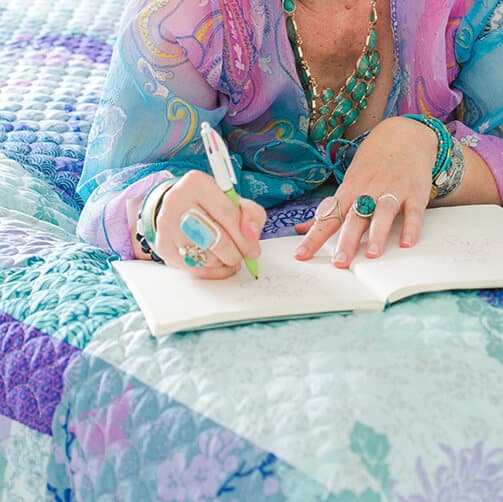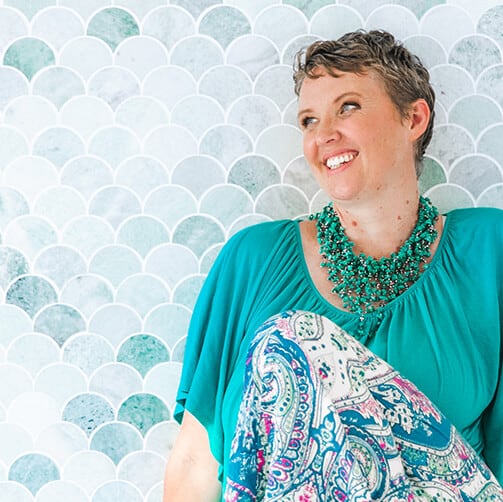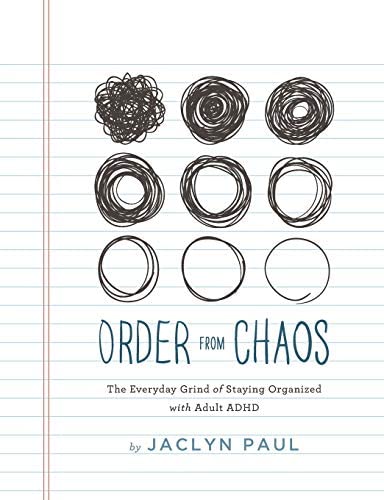
Pooky bears,
Just finished reading “Order From Chaos: The Everyday Grind of Staying Organised with Adult ADHD” by Jaclyn Paul from The ADHD Homestead.
It was bloody brilliant – it will definitely get added to my Best Books of the Year list and I’ve already added it to my favourite Autism resources.
It’s basically an ADHD guide to doing David Allen’s Getting Things Done system (which I already use and love). She combines digital project management with a bullet journal plus a working knowledge of Gretchen Rubin’s Four Tendencies… which is exactly what I use. So… basically, totally up my fucking alley! Ha!
I was diagnosed with ADHD along with Autism last year when I was assessed. It originally was a surprise to me – I knew I was Autistic already, but I hadn’t considered ADHD. Since then I’ve learned so much about ADHD and it’s been like discovering an extra piece of the puzzle. I’ve also learned that having a combination of ASD & ADHD is more common that not – up to 75% of neurodiverse peeps have both. In fact, there’s increasing research that shows ASD & ADHD may be the same brain – it just presents differently. That possibility blows me away!
Anyways, here’s my notes on this book for all my neurodiverse niblings… hope it is useful!
“Order From Chaos” notes:
- Extreme disorganization can make ADHD symptoms worse.
- If you’re currently unhappy with the level of disorganization in your life, take some time to figure out why that is — and what you’re looking for.
- ADHD abhors tedium without purpose.
- “I’ve met people who do this — go to the gym and work out — so I can attest that they exist. I don’t understand them, nor will I ever be one of them.” – MOOD
- When you try to get organized, remember it isn’t all about skill and habit development. We must also get real about what’s advisable, or even possible. Even the most organized person can take on too much. For someone with ADHD, that threshold may be lower than you think.
- Doing things because we think we should, rather than because we must or because they serve our Why, leaves little time and energy for our true priorities. Be especially ruthless with activities that require a lot of your ADHD. Most people with ADHD struggle with tedious tasks like filing, paying bills, and reading and answering emails.
- Who we are informs how we ought to solve problems and organize our lives.
- Every time you find yourself feeling stretched thin, break out your to-do list. Make a list of your roles in your office, family, and community. Identify a few you can let go, and find a responsible way to do so.
- Piles form because we lack a system for dealing with incoming items, or because the home or landing pad for those items is too inconvenient.
- Many ADHD households struggle with clutter.
- Don’t ask your brain to look at an entire room full of clutter and form a solution. Break it down, sort it, and contain it. Know your brain, accept your reality, and create a solution that offers the path of least resistance.
- Use your Someday Maybe list for everything you want but can’t do or buy right now.
- Kinkeeping refers to the work that must be done to keep extended families connected. This work often falls on one person, and that person is usually female.
- “Behind every five-star rating on my Goodreads list lurks several hours of missed sleep.” – HA. SAME!
- Simplicity — the art of maximizing the amount of work not done — is essential. Maximize the amount of work not done. Make sure your life/business/system requires as little work as possible.
- Buying a lot of pretty containers and organizing your mess into them will not create lasting change. You need to control the incoming flow of stuff.
- (When your kid is terrified by a project:) Are they big, nebulous things where she might not know where to start? When confronted with a big mess, many people simply freeze. Give a clear, easy starting point, along with a clear process, and you may be surprised at what she’s willing (and able) to do!
- People with ADHD struggle with any decision that requires us to consider several factors. This is probably due to working memory deficiencies, a reduced ability to prioritize individual issues, and other fun facets of our ADHD brains.
- If you have ADHD, and especially if you have a poor memory, your month-ago self can sometimes feel like another person.
- Some of us need a small dose of redundancy for certain things to sink in. And what are those things? They’re my obligations for this week. Each week, I copy all my appointments, reminders, and time-sensitive tasks from Google Calendar to my Daily Log.
- I’ve found that handwriting my agenda at the start of each week significantly increases my awareness of what I need to do and when.
- For those with ADHD especially, the big picture must be tangible. Otherwise we cannot grasp what has been done or what we still need to do. Something will slip through the cracks.
- Don’t judge yourself for failures; write the problem down and troubleshoot solutions instead.
- Because we’re drawn to novelty, because we crave stimulation, and because we lack a firm grasp on time itself, people with ADHD have trouble saying no. We aren’t very good at assessing our lives and saying, “this is enough,” or even more difficult, “this is too much.”
- If we live every day feeling maxed out, we won’t have energy to deal with unexpected challenges.
- Many people with ADHD resign ourselves to a home full of half-finished projects.
- We gravitate toward anything that provides quick, repeated bursts of dopamine (Facebook, Doritos, making inappropriate jokes).
- At the end of the day, your home and possessions are yet another commitment.
Tips when doing a GTD Weekly Review with ADHD:
- Make sure your system is sustainable for the long term by keeping your Weekly Review short and manageable, getting your ADHD symptoms under control, and giving yourself a workspace that meets your needs.
- The second-biggest challenge to reaching Inbox Zero with ADHD is resisting the temptation to do everything, completely, as it comes up. Maybe you’re afraid you’ll forget to take care of it unless you do it now. This is understandable, given your past. But we’re setting up a new system here, and you must learn to trust it.
- A person with ADHD can easily be derailed by the item we pull out (of our inbox to process) and exclaim, “Oooh! I forgot about this! Let me take care of it right now…” An hour goes by and we still have a full inbox. Even if we aren’t victims of the forgetting fear mentioned above, we can get roped into something that sounds more fun, like planning a ski vacation, rather than deciding what to do with that returned holiday card. If you have ADHD, you know you can always, always find something more appealing than that thing you don’t want to do. The temptation to work on a fun item from your inbox at the expense of everything else in there is strong. Resist it.
- Quit drinking from the pipe. You can knock out very short tasks while emptying your inbox, but avoid stopping for anything over two minutes. Otherwise, your inbox will never be empty. I know it’s hard to do when you have ADHD, but you need to try your best every time.
- Resist the temptation to skip around and work on more fun or interesting projects first.
- Never put something back into your inbox once you take it out.
Highly recommending reading this book if these notes are dinging a bell for you!
Big love,
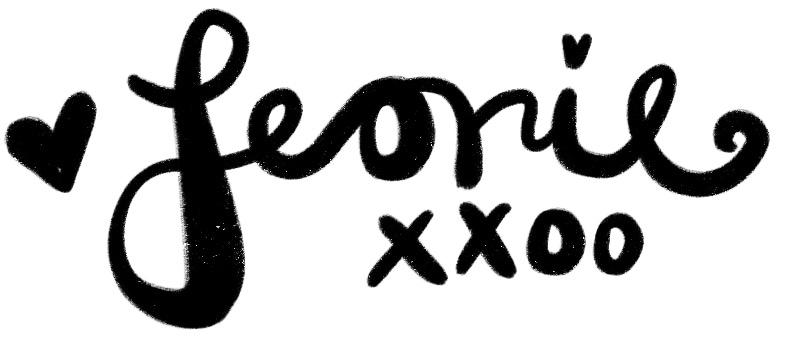

FREE GOODIES:
- Newsletter with absoloodely everything I create
- Weekly love letters
- Podcast: Leonie Dawson Refuses To Be Categorised
- A library of free treasures
BOOKS:
- Goal Getter workbooks for 2022 & beyond!
- Calm Christmas Planner
- Salt: a hottttt romance novella (published under my pen name Lola Leigh)
COURSES:
- Work Less, Earn More
- Behind The Scenes of a Multi-Millionaire’s Finances (only $7!)
- Sales Star
- Marketing Without Social Media
- Money, Manifesting & Multiple Streams of Income
- 40 Days To A Finished Book
- 40 Days To Create & Sell Your E-Course


